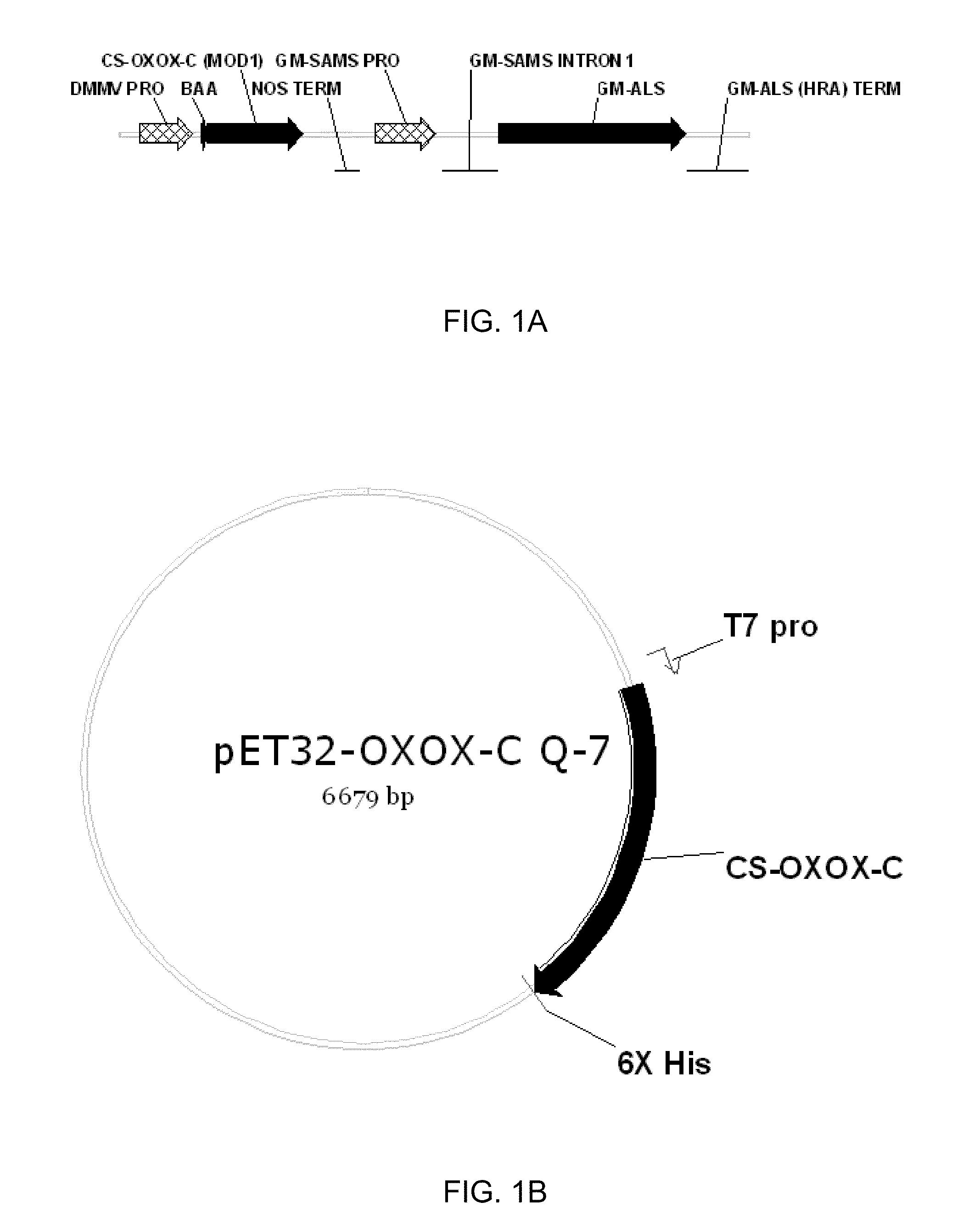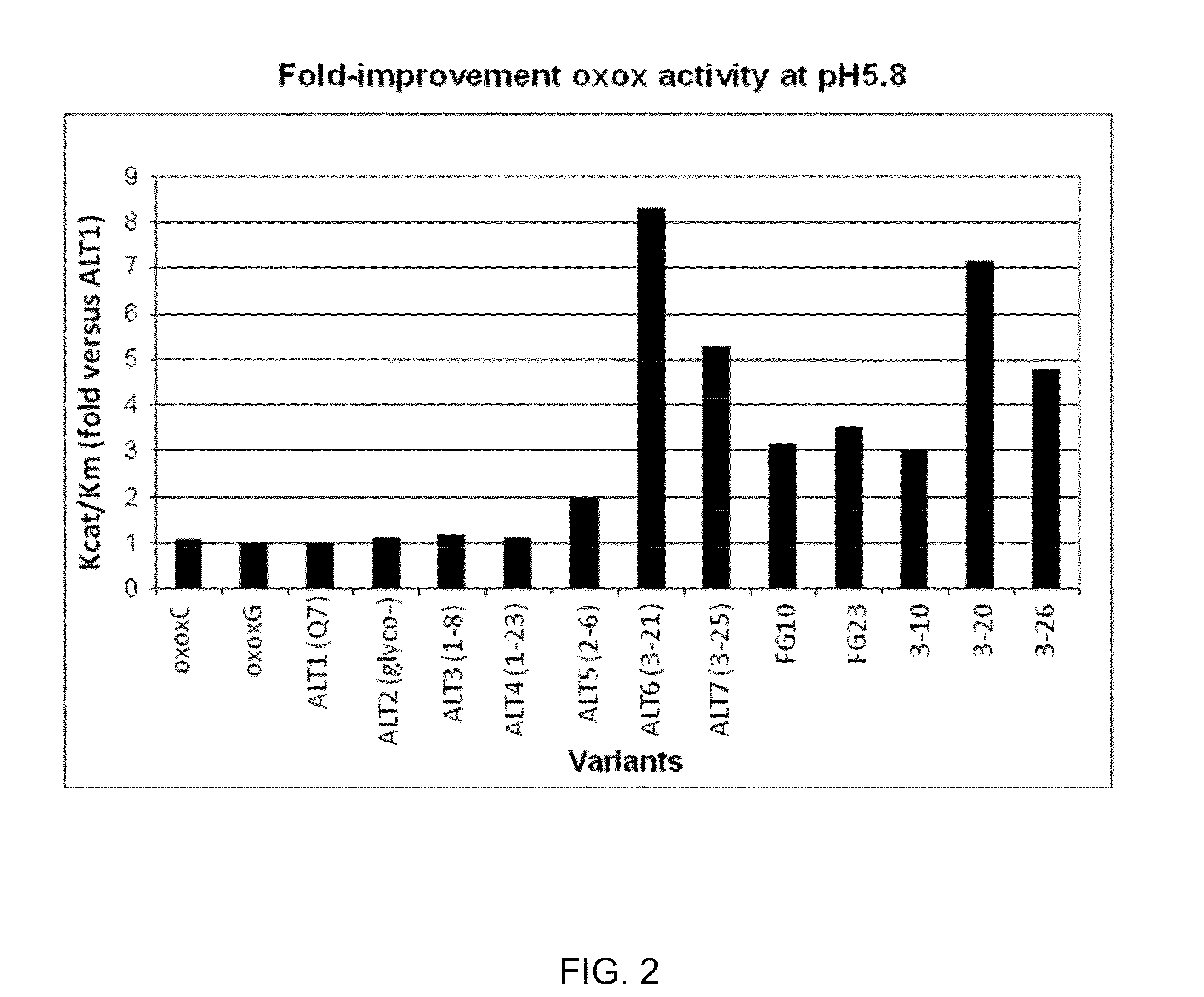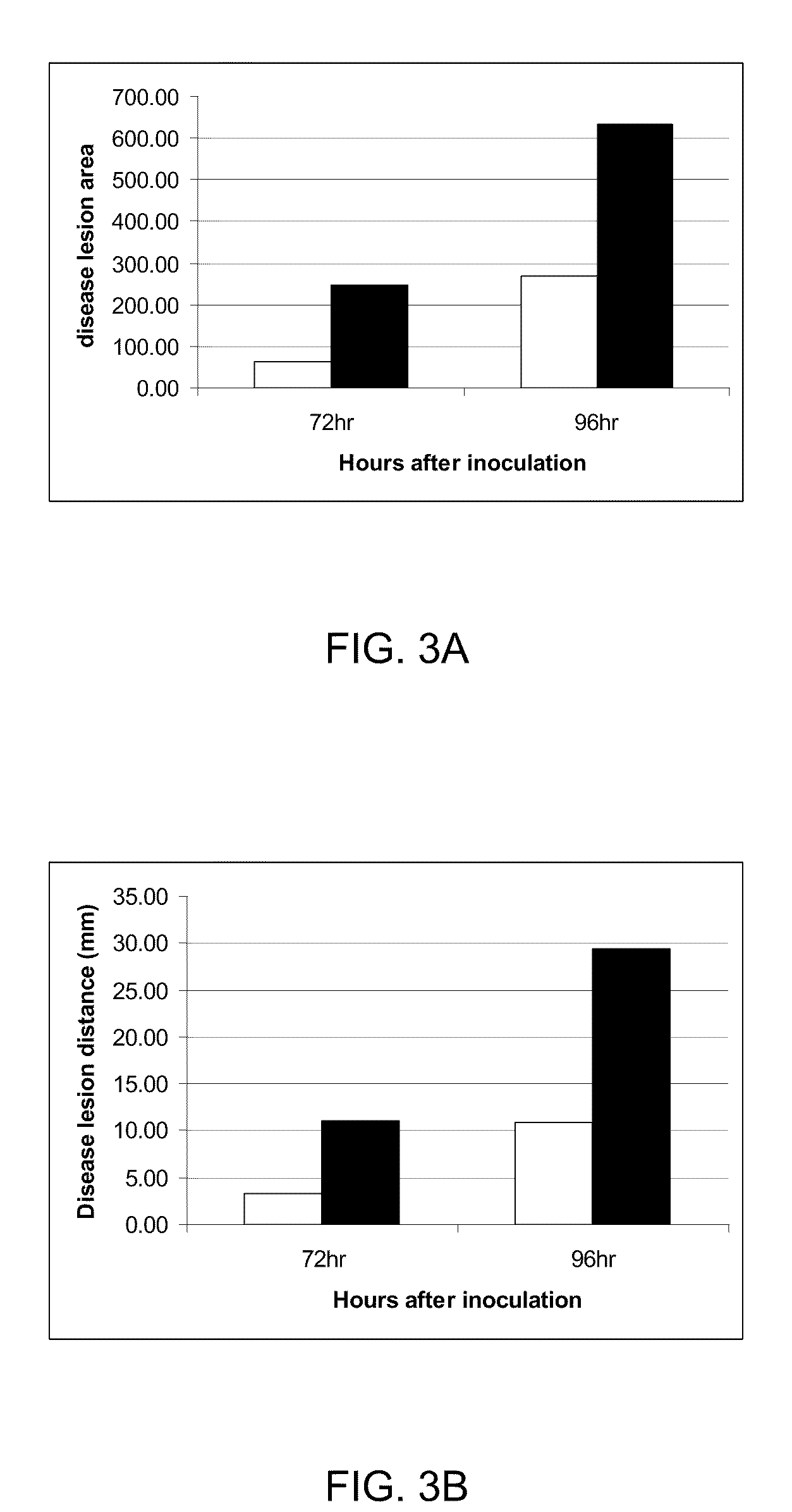Engineering plant resistance to diseases caused by pathogens
a technology of pathogens and plant resistance, applied in the field of genetic improvement of plants, can solve the problems of little genetic resistance currently available in breeding programs, oxalate-secreting pathogens, and ongoing and constant problem of plant cultivation, so as to increase the resistance of plants to pathogens, and maintain or increase oxox activity
- Summary
- Abstract
- Description
- Claims
- Application Information
AI Technical Summary
Benefits of technology
Problems solved by technology
Method used
Image
Examples
example 1
Cloning of Fungal OXOX
[0214]Sequences of both OXOX C and G alleles were published by Escutia et al., 2005 and were deposited with EMBL: OXOX-C partial genomic DNA, Acession No. AJ746414; OXOX-C partial cDNA, Acession No. AJ563659; OXOX-G genomic DNA, Acession No. AJ563660; OXOX-G cDNA, Acession No. AJ746412. See also, Escutia et al., Cloning and sequencing of two Ceriporiopsis subvermispora bicupin oxalate oxidase allelic isoforms: implications for the reaction specificity of oxalate oxidases and decarboxylases. (2005). Based on published sequence, mature proteins of OXOX C (SEQ ID NO: 21) and G (SEQ ID NO: 22) were synthesized and fused to N-terminal barley alpha amylase signal sequence (BAA ss; SEQ ID NO:3). The fungal OXOX coding sequence was synthesized with codon usage suitable for expression in soybean (FIG. 1A) and E. coli (FIG. 1B).
example 2
E. coli Expression of OXOX
[0215]The E. coli expression system was based on the published protocol of Escutia et al. Escutia et al., Cloning and sequencing of two Ceriporiopsis subvermispora bicupin oxalate oxidase allelic isoforms: implications for the reaction specificity of oxalate oxidases and decarboxylases. (2005). The coding sequence for the mature OXOX enzyme was inserted in E. coli expression vector pET32 (Invitrogen) to include a 6× histidine tag at the C-terminus. The resulting expression plasmid was transformed into E. coli strain BL21Star pLysS (Invitrogen).
[0216]E. coli cultures were grown at 37° C. At optical density 0.4, arabinose was added to a concentration or 0.4%. After another hour of growth at 37° C., MnCl2 was added to 5 mM and IPTG to 1 mM. Cultures were then grown at 25° C. for 16 hours. Cells were harvested by centrifugation at 4000 rpm for 10 min. The supernatant was discarded and cell pellets were kept at −80° C. for at least one hour. Pellets were resuspe...
example 3
OXOX Enzymatic Activity Determination
[0217]Oxalate oxidase enzymatic activity was determined in a coupled reaction. Oxalate oxidase converts oxalic acid to carbon dioxide and hydrogen peroxide. In the presence of horse radish peroxidase, hydrogen peroxide reacts with 3-methyl-2-benzothiazolinone hydrazone (MBTH) and N,N-dimethylaniline (DMA) to form indamine dye, which can be detected spectrophotmetrically or colorimetrically as described by Laker, M. F., Hoffman, A. F., and Meeuse, J. D. (1980) Clinical Chemistry 26, 827-830. The coupled reaction was used for characterization of oxalate oxidase kinetic properties as well as in a screening procedure to identify oxalate oxidase variants with improved enzymatic properties.
[0218]A quick OXOX assay was developed to identify OXOX positive transgenic plants and quantify OXOX activity in transgenic plants as previously described with modifications (Hu et, al, 2005). A single leaf disk was harvested into 96-well plate from an individual pla...
PUM
| Property | Measurement | Unit |
|---|---|---|
| digestibility | aaaaa | aaaaa |
| digestibility | aaaaa | aaaaa |
| digestibility | aaaaa | aaaaa |
Abstract
Description
Claims
Application Information
 Login to View More
Login to View More - R&D
- Intellectual Property
- Life Sciences
- Materials
- Tech Scout
- Unparalleled Data Quality
- Higher Quality Content
- 60% Fewer Hallucinations
Browse by: Latest US Patents, China's latest patents, Technical Efficacy Thesaurus, Application Domain, Technology Topic, Popular Technical Reports.
© 2025 PatSnap. All rights reserved.Legal|Privacy policy|Modern Slavery Act Transparency Statement|Sitemap|About US| Contact US: help@patsnap.com



